A History of the Nuclear Age
“YOU MIGHT WANT TO KNOW”
By John P. Warnock

In 2009, in a speech in Prague, the 44th President of the United States, Barack Obama, said, “So today, I state clearly and with conviction America’s commitment to seek the peace and security of a world without nuclear weapons.” I have joined in that commitment by writing over a hundred short pieces that have been published at johnw.substack.com under the general title, “You Might Want to Know.” Some are being offered in this blog. — John P. Warnock
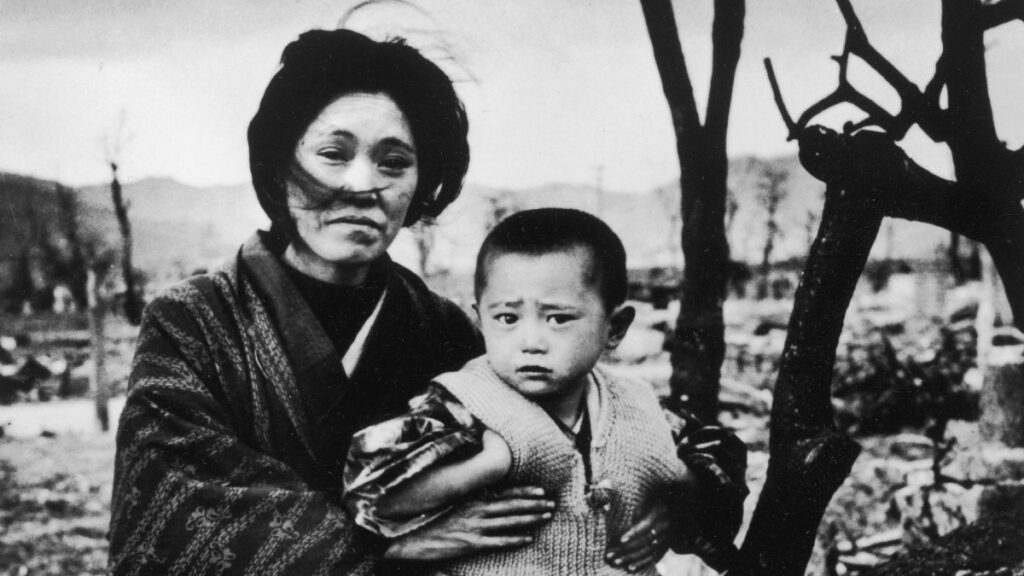
Alfred Eisenstaedt/Pix Inc./The LIFE Picture Collection
Were the Hiroshima and Nagasaki Bombs the Same or Different?
They were the same and different.
Both were “atom bombs,” yes, though scientists prefer the term “nuclear bomb.” Both were bombs that produced their amazing amounts of explosive energy by quickly compressing a fissile fuel into a supercritical state. This produced an uncontrolled chain reaction of neutrons splitting the nuclei of the atoms of fissile fuel and releasing the energy. (When you see “uncontrolled chain reaction,” don’t think about a length of chain. Think about something that grows exponentially, everything doubling in every generation, with something like 80 generations of division–in less than a millionth of a second.)
And both were “fission bombs” but different in an important way.
Before they are exploded, fission bombs have inside them some fissile fuel in a quantity and density that is not yet “critical” — that is, not yet generating a chain reaction. To produce the atomic explosion, conventional explosives are set off that compress this fissile fuel very quickly into a state that is “supercritical.” That’s the state that produces not just some energy but vast amounts of it in a very short time — explosive energy. But the fissile fuel inside in the two bombs was different, and because it was, the fissile fuel had to be compressed in very different ways.
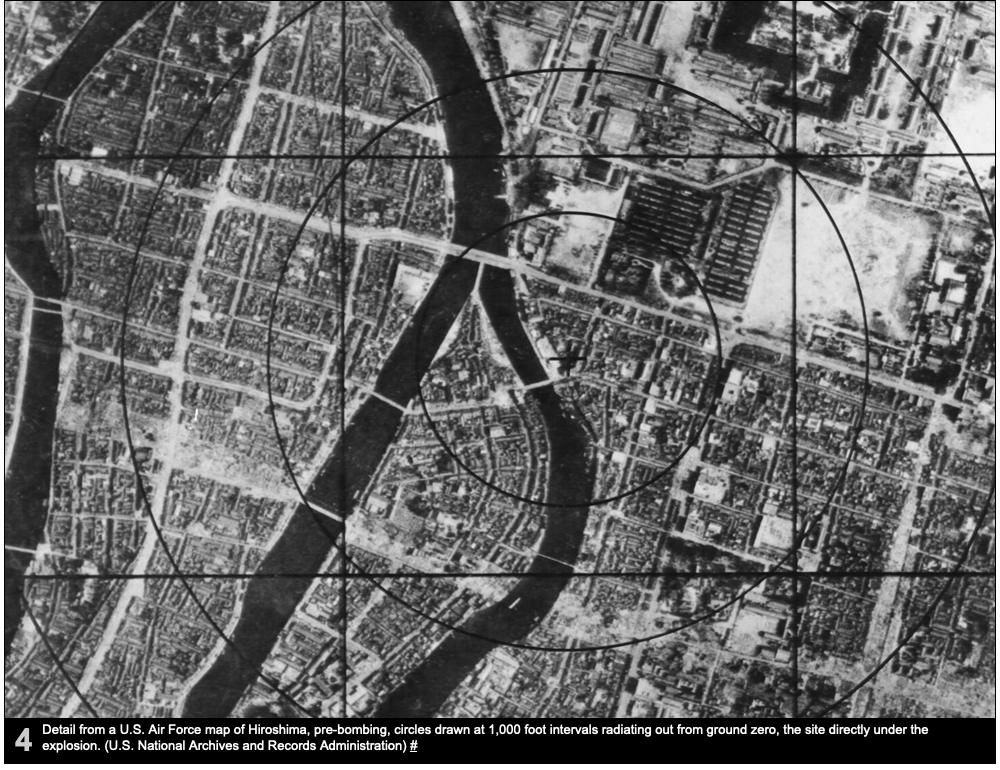
Highly Enriched Uranium for Little Boy
Little Boy, the bomb dropped on Hiroshima on August 6, 1945, used as its fissile fuel highly enriched uranium. Uranium is found in ore deposits in the ground. We had some good deposits of uranium in the U.S. in the Colorado Plateau, though during the Manhattan Project we didn’t yet know it. The uranium for Little Boy was brought from the Belgian Congo and Canada.
For it to become a “fissile fuel,” the naturally occurring uranium ore had to be “concentrated” and then “enriched” to contain close to 90% of U235, the isotope of uranium that can be used in a fission bomb. Pure uranium metal is only .7% U235. Figuring out how to enrich the uranium to 90% U235 had been the major technical and engineering challenge in the Manhattan Project. The design problems of the Hiroshima bomb were solved before enough highly enriched uranium became available for it. The scientists and engineers at Los Alamos were sure this uranium bomb would work. So sure, that when they finally acquired enough weapons-grade uranium for a bomb, they decided not to waste any of it in a test. The first explosion ever of a uranium bomb was the one that on August 6, 1945 destroyed the city of Hiroshima and killed 70,000 people there.
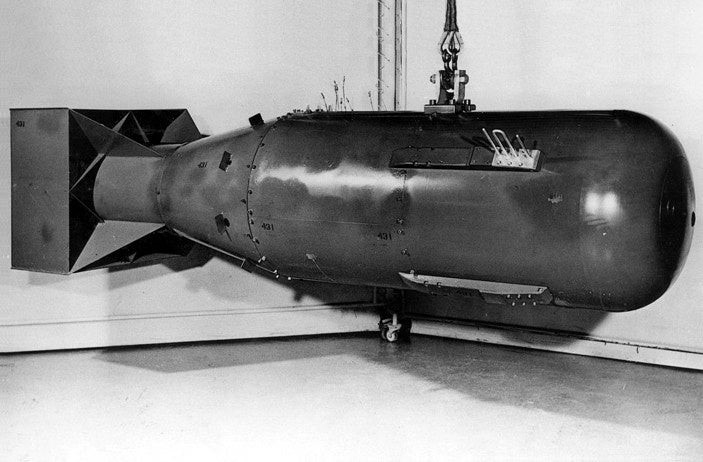
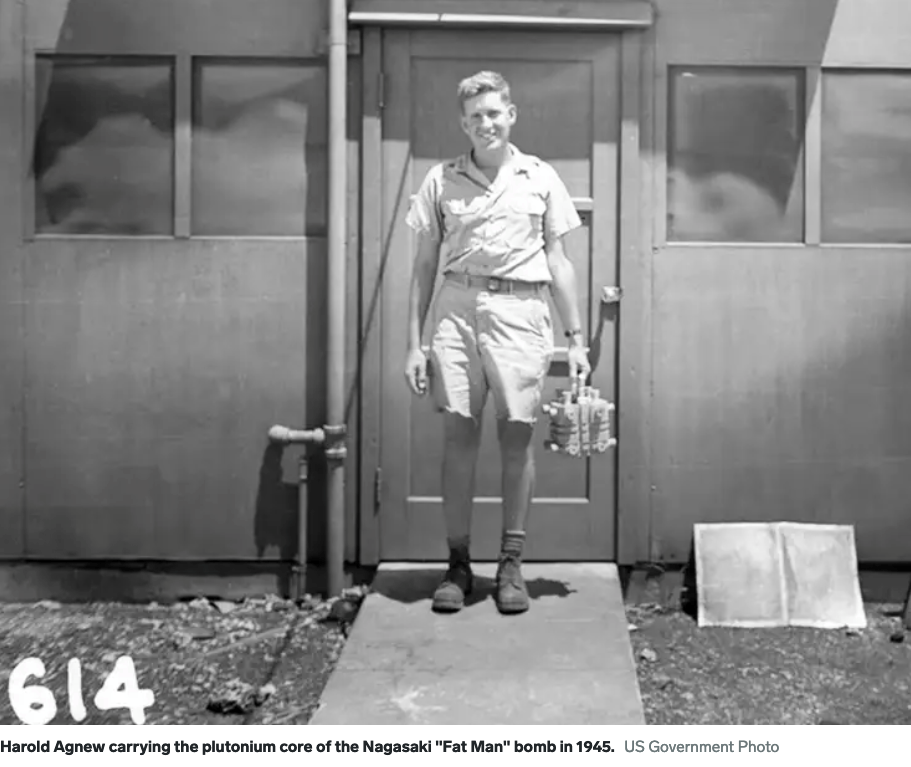
‘Fat Man’ Called on Man-made Plutonium
Fat Man, the bomb dropped on Nagasaki on August 9, 1945, used plutonium as its fissile fuel. Plutonium does not occur naturally. It cannot be mined. We must make it. It is made in operating nuclear reactors.
All operating nuclear reactors are making plutonium. It is one of the products of the fission going on in the low-enriched uranium in their fuel assemblies. To be used as a fissile fuel, the plutonium must be extracted from the fuel assemblies, which are now highly radioactive. In a chemical operation. Leftover uranium is also extracted. Large amounts of long-lasting highly radioactive waste are left over.
The plutonium for Fat Man was produced in the big reactors and chemical “canyons” the Manhattan Project built at Site W in eastern Washington State on the Columbia River, pictured below.
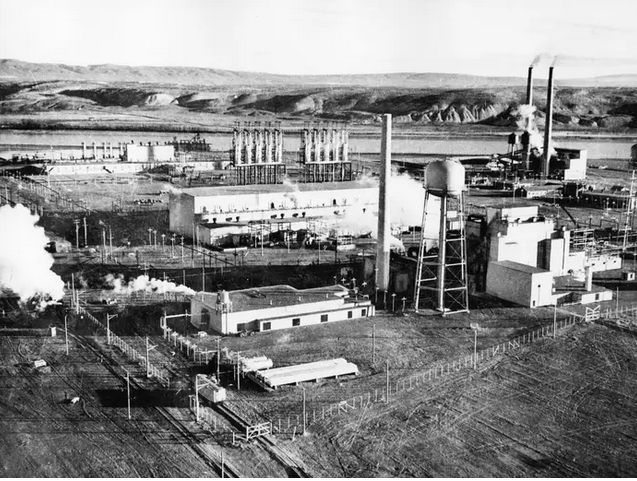
Timing Was Everything
When it came to bomb design, the technical challenge for both bombs was how to “assemble” (the word the scientists used) the fissile fuel fast enough for it to become “supercritical.” The assembly had to happen fast because as soon as the fissile fuel went critical, the chain reaction would start, and the energy being generated would drive apart the atoms of the fissile fuel and keep it from becoming supercritical. The chain-reacting atoms wouldn’t have to be pushed apart very far, maybe a centimeter, before the chain reaction would stop and no more energy would be released.
The scientists estimated that the uncontrolled chain reaction would need to last about a millionth of a second. In a bomb, everything “interesting,” to use the word a Manhattan Project scientist used in an introductory lecture, would have to happen in that amount of time.
U235 could be compressed into a supercritical state by putting two not-yet-critical slugs of weapons-grade uranium at opposite ends of a big gun barrel and, using a conventional explosive like cordite, shooting them together.
But when the scientists at Site Y at Los Alamos, where the bomb was being designed, got their first samples of plutonium and analyzed them, they realized it was more fissile than U235, so much more so that if you shot two pieces together in a gun barrel, the chain reaction would start so soon that it would keep the plutonium from reaching the supercritical state. You’d get a small explosion and a big burst of ionizing radiation, but not the huge explosion desired.
The scientists and engineers at Site Y figured they might be able to compress the plutonium fast enough if they surrounded a ball of plutonium that was not yet critical with “lenses” of conventional explosive that had been designed to explode inward. If the lenses could be made to “implode” uniformly, they might be able to compress the (not-yet-critical) grapefruit-sized ball of plutonium to the (super-critical) size of an eyeball.
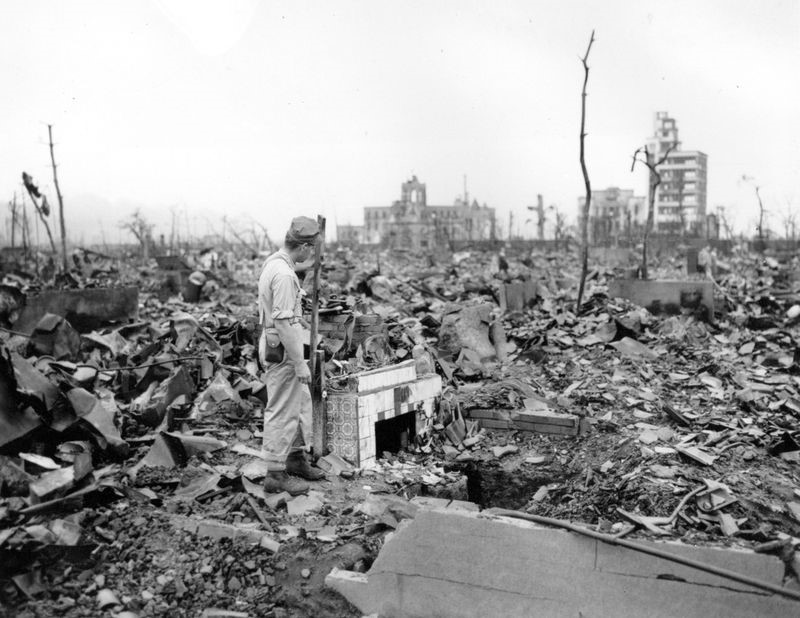
Plutonium Wins Out
When it came to bomb design, the technical challenge for both bombs was how to “assemble” (the word the scientists used) the fissile fuel fast enough for it to become “supercritical.” The assembly had to happen fast because as soon as the fissile fuel went critical, the chain reaction would start, and the energy being generated would drive apart the atoms of the fissile fuel and keep it from becoming supercritical. The chain-reacting atoms wouldn’t have to be pushed apart very far, maybe a centimeter, before the chain reaction would stop and no more energy would be released.
The scientists estimated that the uncontrolled chain reaction would need to last about a millionth of a second. In a bomb, everything “interesting,” to use the word a Manhattan Project scientist used in an introductory lecture, would have to happen in that amount of time.
U235 could be compressed into a supercritical state by putting two not-yet-critical slugs of weapons-grade uranium at opposite ends of a big gun barrel and, using a conventional explosive like cordite, shooting them together.
But when the scientists at Site Y at Los Alamos, where the bomb was being designed, got their first samples of plutonium and analyzed them, they realized it was more fissile than U235, so much more so that if you shot two pieces together in a gun barrel, the chain reaction would start so soon that it would keep the plutonium from reaching the supercritical state. You’d get a small explosion and a big burst of ionizing radiation, but not the huge explosion desired.
The scientists and engineers at Site Y figured they might be able to compress the plutonium fast enough if they surrounded a ball of plutonium that was not yet critical with “lenses” of conventional explosive that had been designed to explode inward. If the lenses could be made to “implode” uniformly, they might be able to compress the (not-yet-critical) grapefruit-sized ball of plutonium to the (super-critical) size of an eyeball.
________________________________________________________________________________
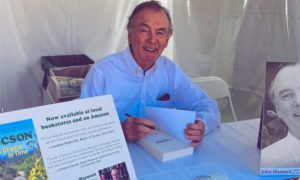
________________________________________________________________________________

Note about the logo image:
In case you noticed, yes, a cityscape has
been superimposed on the photo of the
Ivy Mike explosion, for perspective.
________________________________________________________________________________